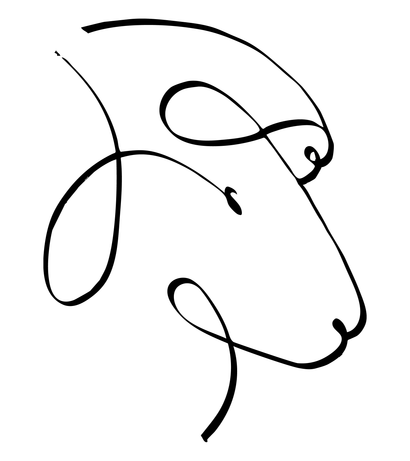Interchangeable needles - a beginner's guide
Interchangeable needles are the greatest thing to happen to knitting since the invention of the circular needle! If you're a beginning knitter, this article explains why interchangeable needle sets are so helpful. here's a primer on how circular needles work and why you should consider a set of interchangeable needles sooner, rather than later, in your knitting journey. Most knitters have at lease one set, and many knitters have several sets. In this article, we'll talk about what an interchangeable set is, why you need one, and which set might be the best for you.
Why would you need Interchangeable Needles?
Circular needles, those needles that have a knitting needle on each end and a flexible cord in the middle. They come with different sizes, from US 0 (2mm) (and below) all the way up to US 50 (25mm). The are each available with different circumferences, for knitting in the round. You can choose a US 6 circular needle with a 16", 24", 29", 32", 40" etc. cord, depending on how many stitches you will have on your circular needle.
So, if you knit a lot, you could have a circular needle in each of 10 different sizes and 6 different lengths. That gets to be a lot of different sets of needles!
How to Interchangeable Needles work?
With interchangeable needles, instead of having a separate needle for each cable length, there is one needle tip and multiple cables of different lengths. You can choose the needle you need and attach the length of cable you want to that needle. So instead of having a US 8 24", a US 8 32", and a US 8 40", you would have one set of US 8 tips and three cables.
Those same three cables are also used on the other tips in your set, so you end up with the equivalent of 32 or more different needle size and length combinations.
What are the different types of interchangeable needles?
There are several brands of interchangeable needles on the market, and each brand offers several different different styles. The first thing to consider is the join mechanism - . that is, how do the needle tips attach to the cables? most brands have a screw-in join that you can tighten with small tool. Addi brand has a unique push and twist mechanism that clicks into place.
The next consideration is the tip material. There are wooden, bamboo, surgical steel, white bronze over brass, copper, and acrylic tips. Each brand offers a variety of tip materials, and all tips within a brand typically fit all of the cables.
You'll also want to consider the tip's point. The point is the very end of the tip and can range from softly pointed to very very sharp. Within each brand, there are different tip styles to suit the knitter's preferences and needs. Different yarns often require different tips. Lace work, cables, and fancy stitches are often easier on very pointy tips, while super bulky yarns, boucle, and single ply yarns are often best on less pointy tips.
The interchangeable cables themselves are a huge factor for many knitters. Most cables are nylon and retain a certain amount of kink to them if you are not using the full length of the cable. ChiaoGoo has a unique flexible cable that never kinks, which some knitters really love.
Another consideration is whether the cables swivel or are fixed. On cables that swivel, the cord rests inside the join mechanism so they can rotate as you knit. On fixed cables, the cord is permanently attached and does not rotate.
Before investing in an interchangeable set, you should purchase a few fixed sets of each brand you are considering. Take them home and work with them on a few different yarns and see which material and tip you prefer. We have a handy needle sample kit that includes one each Lykke Grove Bamboo, Lykke Birch, Addi Turbo, Addi Rocket Squared, and ChiaoGoo Red Lace needles in an assortment of 24" and 32".
After you've sampled the fixed circulars, you should go to your local yarn store and try out the kit you're considering. Most yarn shops carry a variety of interchangeable sets you can see and try. Since you already know about the tips, cables, and points, from your research on the fixed needles, you're only looking at the joins. It should make your selection fairly easy.
Final word on purchasing interchangeable sets. Interchangeable sets will save you a lot of money by eliminating the need to have multiple needles in the same size with different cable lengths. But they are still a fairly hefty investment. It can be tempting to scour the web for cheap prices, but do yourself a favor and purchase from a local brick and mortar yarn store, or their website. There are many knockoff brands and cheap imitations that may look the same, but trust me, they are not.
Reputable interchangeable companies stand behind their product should there be a defect or other problem with your set, but only if purchased through an authorized dealer.
I hope this has been a helpful primer on interchangeable needles.
I have a detailed YouTube video on how to choose the best interchangeable set, as well as reviews of the various sets here. Enjoy, and happy knitting!
~Ellen

